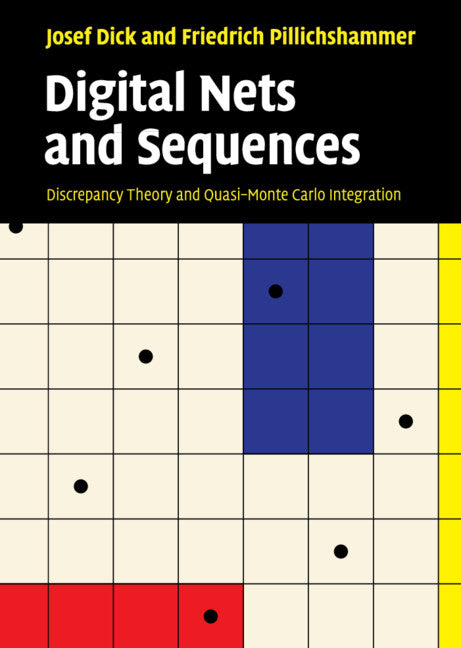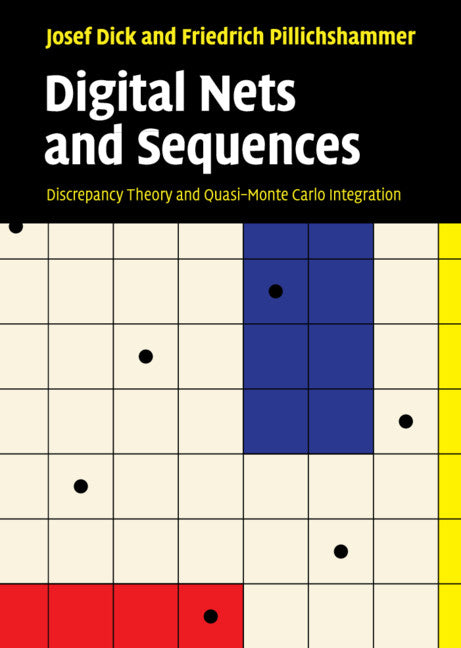Freshly Printed - allow 8 days lead
Couldn't load pickup availability
Digital Nets and Sequences
Discrepancy Theory and Quasi–Monte Carlo Integration
An introduction to contemporary quasi–Monte Carlo methods, digital nets and sequences, and discrepancy theory. Includes many exercises, examples and illustrations.
Josef Dick (Author), Friedrich Pillichshammer (Author)
9780521191593, Cambridge University Press
Hardback, published 9 September 2010
618 pages, 45 b/w illus. 260 exercises
25.4 x 18 x 3.5 cm, 1.2 kg
"This book provides a self-contained and comprehensive exposition of one of the most attractive techniques for numerical integration, the so-called quasi-Monte Carlo (QMC) rule. As well-known specialists in the field, the authors have made a tour de force to include, systematize, and unify their achievements and an impressive number of results of other people. By introducing the concepts and methods in an accessible and intuitive form, the authors have provided a useful book that is accompanied by a lot of illustrative examples, graphics and applications."
Petru P. Blaga, Mathematical Reviews
Indispensable for students, invaluable for researchers, this comprehensive treatment of contemporary quasi–Monte Carlo methods, digital nets and sequences, and discrepancy theory starts from scratch with detailed explanations of the basic concepts and then advances to current methods used in research. As deterministic versions of the Monte Carlo method, quasi–Monte Carlo rules have increased in popularity, with many fruitful applications in mathematical practice. These rules require nodes with good uniform distribution properties, and digital nets and sequences in the sense of Niederreiter are known to be excellent candidates. Besides the classical theory, the book contains chapters on reproducing kernel Hilbert spaces and weighted integration, duality theory for digital nets, polynomial lattice rules, the newest constructions by Niederreiter and Xing and many more. The authors present an accessible introduction to the subject based mainly on material taught in undergraduate courses with numerous examples, exercises and illustrations.
Preface
Notation
1. Introduction
2. Quasi–Monte Carlo integration, discrepancy and reproducing kernel Hilbert spaces
3. Geometric discrepancy
4. Nets and sequences
5. Discrepancy estimates and average type results
6. Connections to other discrete objects
7. Duality Theory
8. Special constructions of digital nets and sequences
9. Propagation rules for digital nets
10. Polynomial lattice point sets
11. Cyclic digital nets and hyperplane nets
12. Multivariate integration in weighted Sobolev spaces
13. Randomisation of digital nets
14. The decay of the Walsh coefficients of smooth functions
15. Arbitrarily high order of convergence of the worst-case error
16. Explicit constructions of point sets with best possible order of L2-discrepancy
Appendix A. Walsh functions
Appendix B. Algebraic function fields
References
Index.
Subject Areas: Algorithms & data structures [UMB], Probability & statistics [PBT]


